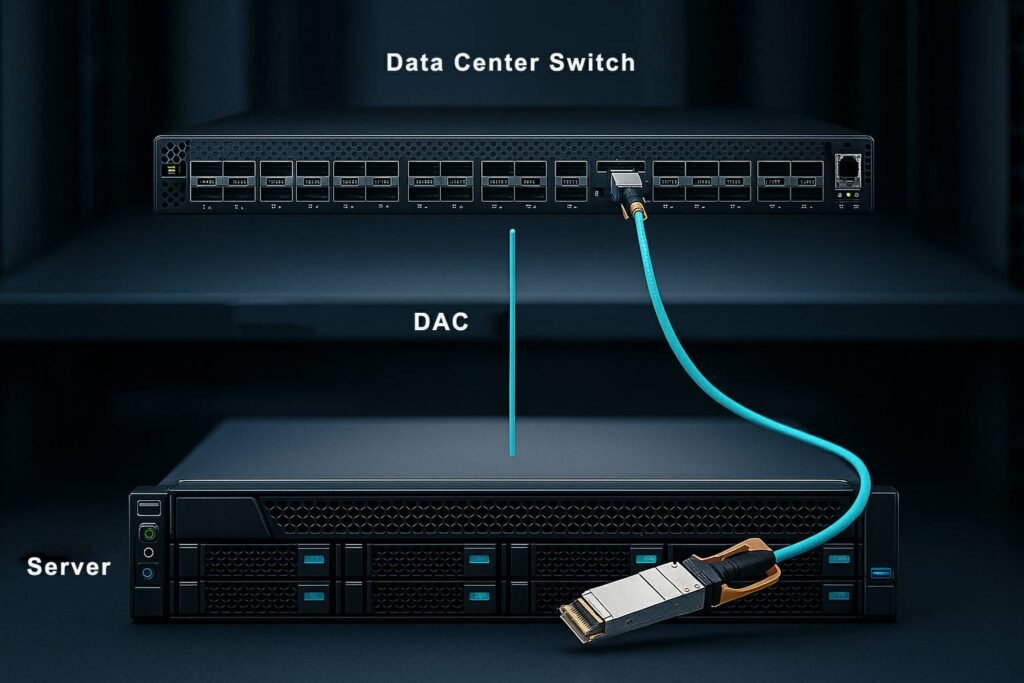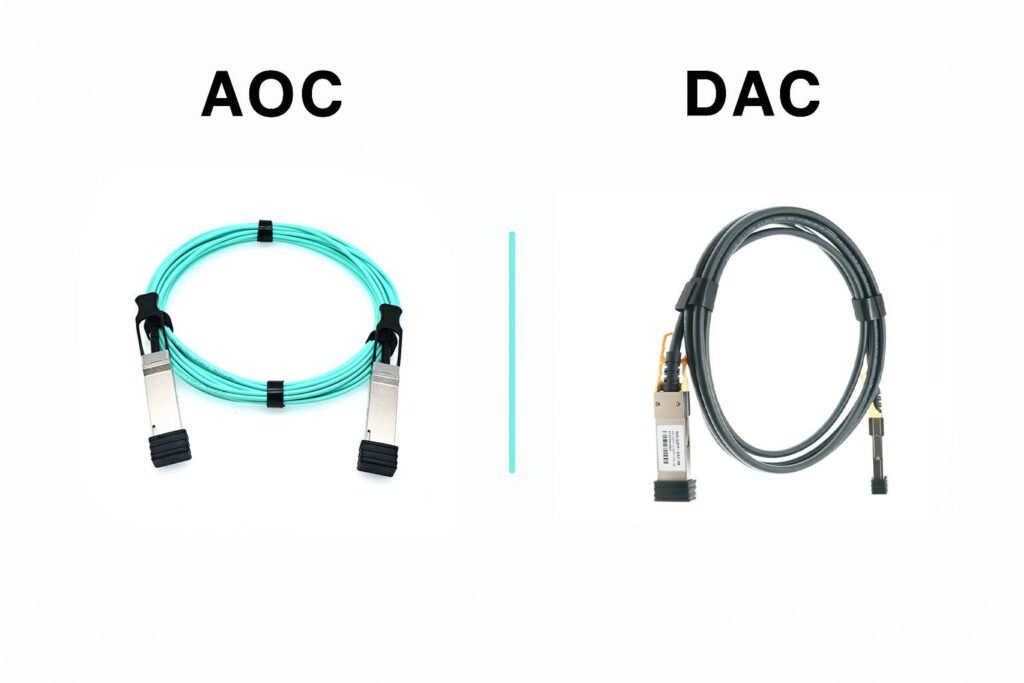Your AI and HPC workloads demand incredible speed. But network bottlenecks are slowing down your computations, delaying results and increasing operational costs. The choice between AOC and DAC is critical.
For ultra-low latency over distances greater than 5 meters, Active Optical Cables (AOCs) are superior. For short-reach, cost-sensitive connections under 3 meters, Direct Attach Cables (DACs) are the more economical choice.
I once had a client whose machine learning cluster was underperforming. They thought they needed more servers. But the real problem was in their cabling. Let’s explore why this choice is so important.
How Do AOC and DAC Architectures Actually Work?

So, what’s really happening inside these cables? Understanding their basic design is the first step to making an informed choice for your needs.
AOCs use fiber optics to convert electrical signals to light for transmission. DACs are simpler; they use copper cables to send electrical signals directly between two points.
This fundamental difference in how they move data is what creates the performance trade-offs we’ll discuss.
For further insight on structured cabling’s impact on data networks, see our guide on what is structured cabling and why is it essential for data networks.
Dive Deeper: A Look Inside the Cables
H3: The Active Optical Cable (AOC) Design
An AOC is not just a cable. It’s a complete system. It has optical transceivers attached to both ends of a fiber optic cable. The transceiver on one end converts the electrical signal from your switch into light. The fiber carries this light, and the transceiver on the other end converts it back to an electrical signal for the next device. This process happens very fast.
H3: The Direct Attach Cable (DAC) Simplicity
A DAC is much simpler. It is just a copper cable with connectors on both ends. There is no conversion from electrical to optical. The signal travels from your device, through the copper wire, and to the other device. It’s a direct, passive connection.
H3: Signal Path: The Key Difference
The signal path defines everything.
- AOC Path: Electrical Signal -> Optical Signal -> Electrical Signal
- DAC Path: Electrical Signal -> Electrical Signal
The AOC’s conversion adds a tiny bit of initial delay, but light travels through fiber with almost no loss. The DAC’s path is direct, but electrical signals weaken over copper, especially at high speeds.
Which Offers Better Performance: AOC or DAC?

Now, let’s look at the numbers. Performance is about more than just speed. It’s a balance of latency, power use, and of course, cost.
AOCs offer much lower latency and power consumption, especially at 100G and 400G speeds. But, DACs have a clear cost advantage for short-distance connections.
At Abptel, we test these parameters in our own lab. Here is a clear breakdown based on industry data and our own findings.
For readers interested in high-speed optical transceiver advances driving new performance benchmarks, discover who are the top optical transceiver manufacturers.
Dive Deeper: Performance Data and Analysis
| Parameter | 25G | 50G | 100G | 400G |
|---|---|---|---|---|
| AOC Latency | 0.1ns | 0.2ns | 0.3ns | 0.4ns |
| DAC Latency | 0.5ns | 1.2ns | 2.5ns | 3.8ns |
| AOC Power | 1.2W | 1.5W | 2.8W | 4.6W |
| DAC Power | 3.0W | 5.1W | 9.8W | 18.0W |
| AOC Cost | $200 | $400 | $900 | $2500 |
| DAC Cost | $80 | $150 | $300 | $600 |
H3: Why is AOC Latency So Much Lower?
You might think the AOC’s signal conversion adds delay. It does, but it’s very small. The real issue for DACs is signal degradation. As the electrical signal travels down the copper wire, it weakens. The longer the cable and the higher the speed, the worse this gets. This results in higher overall latency. Light in an AOC does not have this problem.
H3: How Do AOCs Save on Power?
DACs need extra power to compensate for the signal loss in the copper. The switch has to work harder to push a clean signal through the cable. This problem gets much worse at higher speeds. An AOC’s optical components are very efficient. So, they use less power, especially in large deployments where every watt counts.
H3: When Does Each Cable Make Financial Sense?
The cost story is simple.
- Short Distance (≤3 meters): DAC is the clear winner. It’s significantly cheaper and works perfectly for connecting servers in the same rack.
- Medium Distance (5-10 meters): This is the turning point. The total cost of ownership for AOCs starts to look better here, especially when you factor in power savings.
- Long Distance (>10 meters): AOC is the only practical and cost-effective choice.
Final thoughts
AOCs are ideal for low latency and power efficiency over distance. DACs are unbeatable for short-reach, low-cost links. Choose based on your facility’s unique performance and budget needs.
Abptel provides a full range of both AOC and DAC solutions. Contact us at candy@abptel.com for a quote, or download our technical guides to learn more.




